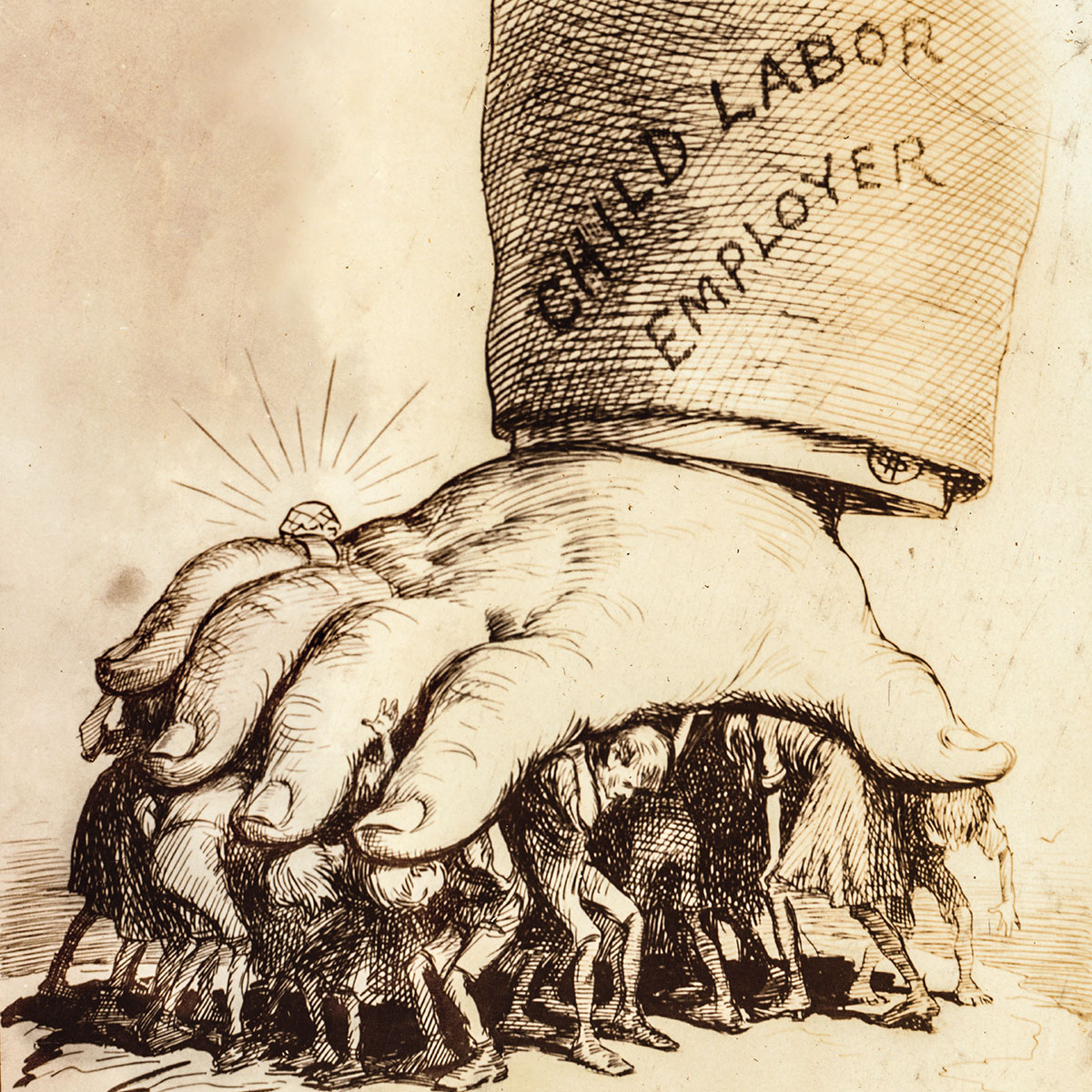A century ago, many children in the United States had to work to help support their families. That was especially true for poor immigrants like Camella Teoli of Lawrence, Massachusetts (see "The Girl Who Spoke Out for Workers' Rights"). At the time, there were few laws regulating how businesses could treat their employees, so young people often worked long hours for little pay. This changed over time as more Americans became aware of the conditions kids were working under.
But child labor is still a problem in many other countries today. A lot of manufacturing that was once done in the U.S. has since been moved overseas to countries where wages are much lower and there are fewer regulations. Kids there often work in conditions that are even worse than those Camella experienced. Many Americans would be shocked to know that children often make the clothes, electronics, and many other products they buy.
These two cartoons comment on child labor. The top cartoon was drawn in 1912 by Lewis Hine. He tried to call attention to the plight of child laborers by taking photos of them—including the one in the article, "The Girl Who Spoke Out for Workers' Rights." The bottom cartoon depicts one kind of labor that children are engaged in today. Study the cartoons, then answer the questions.
1. Who are the people underneath the giant hand in the top cartoon? What is happening to them?
2. Who does the hand belong to? How does the ring on the little finger add to the cartoon’s message?
3. In the bottom cartoon, what is the boy doing? What would he prefer to be doing, and how do you know?
4. Note the large number of soccer balls. How do they contribute to the cartoon’s message?
5. How are the conditions of the children in the top cartoon and the boy in the bottom cartoon alike?




